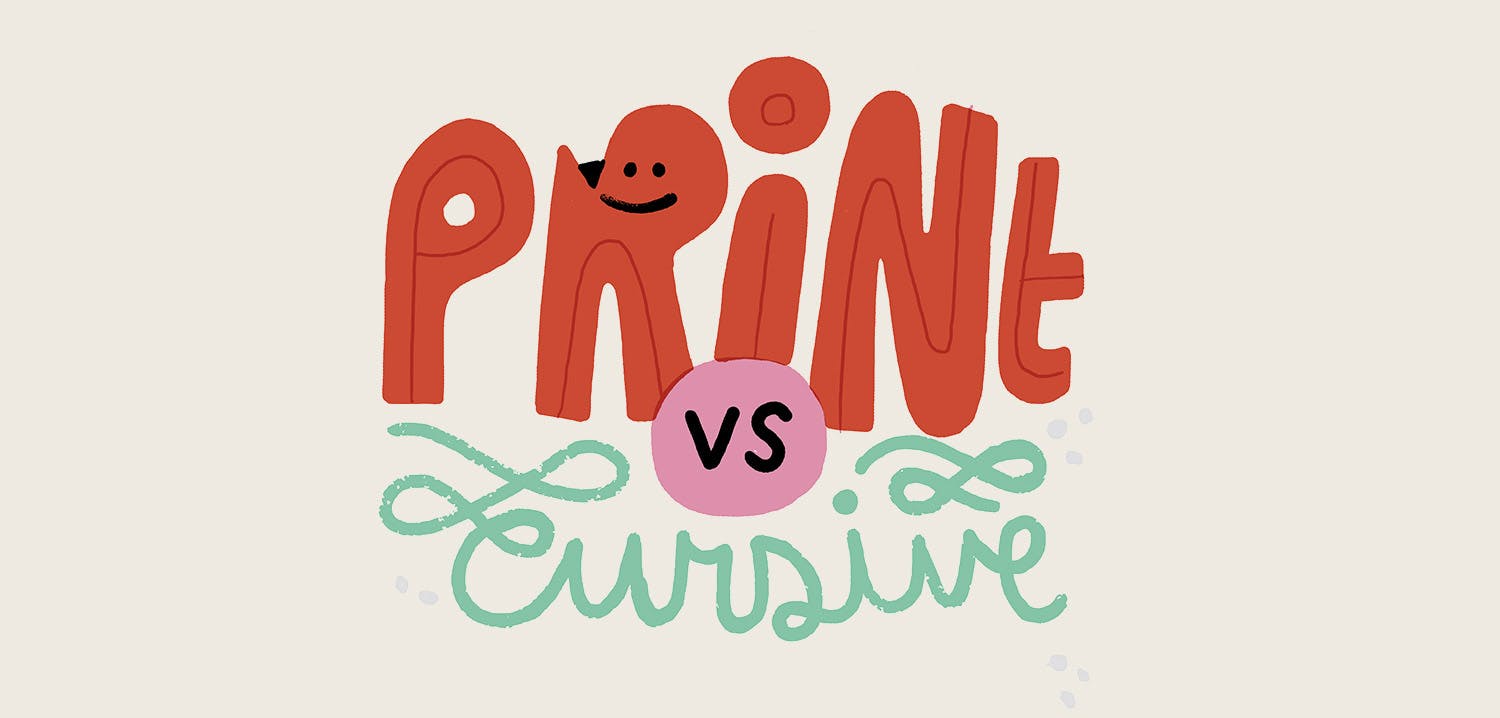Instead of asking which form of writing to teach, we should ask what we most want for our students as they learn to write. What’s the end goal?
This question often provokes strong emotional reactions. Some people love cursive writing, appreciating the elegance of the script and the connections this form of writing has to historical documents — or letters from grandma! Others despise it, recalling their aching hands as they labored to learn another way to write, only to revert back to print — or keyboarding — as soon as they could. Advocates on both sides can point to studies supporting their view, but instruction in cursive writing has been declining over the past few decades. Fewer and fewer teachers use cursive themselves, and one survey indicated that only 12 percent of teachers receive any training in cursive instruction. In a different survey, about 16 percent of high school students said that they used cursive when given a choice.
I want to reframe the question. Instead of asking which form of writing to teach, we should ask what we most want for our students as they learn to write. What’s the end goal? In the big picture, we want students to be able to express their ideas clearly across a range of genres, to a range of audiences, for a variety of purposes. How they transcribe matters much less than what they can communicate through their writing.
Given this, here are two thoughts to keep in mind:
- Students should learn to write by hand in the early grades, even though keyboarding is increasing. Learning to form letters by hand helps with reading and spelling development, along with writing development. Students should not skip handwriting and jump to keyboarding. Additionally, there is strong evidence that taking notes by hand is better than taking notes on a laptop.
- Students need to develop handwriting fluency. If forming letters and words is slow and effortful, students will be less able to express their ideas and writing will suffer overall. Low writing fluency acts as a bottleneck on the writing system, leading to poorer texts, frustration for student writers, and negative attitudes about writing.
Ultimately, I think it’s better for students to master one form of handwriting and achieve fluency than it is to attempt to master two forms of handwriting. I don’t think one form is “better” than the other — research is thin and far from conclusive — but mastering two forms requires twice the time and effort, and is particularly challenging for those with writing difficulties. For this reason, and because print more closely mirrors what students read, I’d argue that students should be taught print first, and given enough practice to master it. If students wish to learn cursive afterwards, I’d recommend it be optional.
For young writers, increasing writing fluency is critical. And the only way to boost handwriting fluency is to engage in lots and lots of writing!

Scott Beers is associate professor and chair of the master of education in literacy program in SPU’s School of Education.




